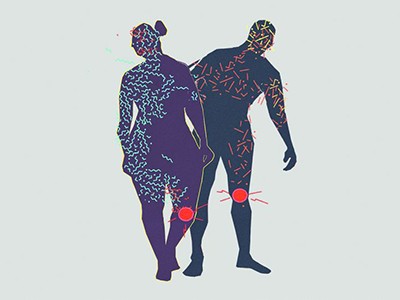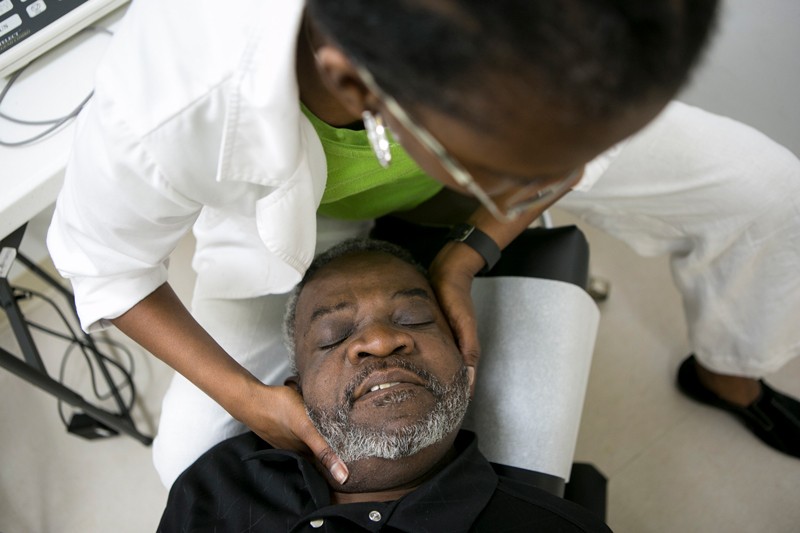Chronic pain — why science has scant succour for one in five people - Nature.com
The Song of our Scars: The Untold Story of Pain Haider Warraich Basic (2022)
As a medical student in Pakistan, Haider Warraich loved to go to the gym. One day, while bench pressing, he dropped a 90-kilogram weight on himself. His back injury ended his plans to become a surgeon and almost dashed his hopes of being a physician. But it gave him something unusual in common with his patients: an insider's view of a life lived in chronic pain.
In The Song of our Scars, Warraich draws on personal and professional experiences to explore acute pain, chronic pain and the US medical system's dismal failures to address them effectively. Acute pain is caused by a specific injury, illness or other trauma. When pain persists after the underlying cause has healed, or for more than 12 weeks, it's chronic pain.
Warraich, now a doctor at Brigham and Women's Hospital in Boston, Massachusetts, offers a fascinating tour of the biology and neuroscience of pain. He delves into the US opioid-use epidemic, and asks how treatment is affected by systemic racial and gender biases. He blasts the US medical system for lacking empathy and time to devote to patients, as well as for being too siloed, insufficiently committed to social justice and too swayed by pharmaceutical marketing. His case is made more urgent by chronic pain's links with long COVID: around 30% of people with the condition in an Italian study reported chronic muscle or bone pain (F. Ursini et al. RMD Open 7, e001735; 2021). Yet his conclusion feels rushed.
One of Warraich's central criticisms is that the medical system has flattened pain, erasing its context and emotional dimensions and collapsing its diversity into numbers on a ten-point scale. The common usage, he explains, encompasses nociception, pain and suffering. Nociception is sensory information — for example, the feeling of the sharp end of a pin pressing into your finger. Pain happens when nociception is processed in the brain and labelled as negative or unpleasant. Suffering results when mental or emotional distress is added — when the pain makes you feel worried, out of control or bad about yourself. So pain is created by the brain and the environment working together. Or acute pain is.

Nature Outlook: Opioids
Chronic pain is a different beast, Warraich contends. It is a top-down process in which the brain can tell the body to feel pain without any input from the senses or environment. Chronic and acute pain "light up two separate, non-overlapping circuits in the brain", he writes.
One in five people worldwide has chronic pain, yet doctors don't know how to treat it effectively, and patients are used to being dismissed and disappointed. "We basically treat chronic pain the way we used to treat tuberculosis before we discovered what caused it," neuroscientist Clifford Woolf tells Warraich.
Chronic pain might be a memory of pain. Memory usually helps us to survive by avoiding painful stimuli in future. But neuroscientist Vania Apkarian suggests that chronic pain could be a memory gone haywire, inducing pain without stimulus. Other research examined PKMzeta, a protein that helps to solidify memories in humans. When researchers blocked it in mice, the animals stopped displaying behaviours associated with chronic pain.
Warraich explores biases including the ugly colonial history of opioids, and the racist notion that Black people have thicker skin than white people (a survey shows that this idea persisted very recently; K. M. Hoffman et al. Proc. Natl Acad. Sci. USA 113, 4296–4301; 2016). He reports the finding that physicians are five times less likely to prescribe opioids to Black children with acute appendicitis than to white children with the condition. A section on gender explores the history of pain management during childbirth, including the misogynist and white-supremacist origins of the natural-childbirth movement, and a rousing endorsement of the epidural. In general, women (including trans women taking oestrogen) experience more pain than men, and are more sensitive to it. Even female rodents tend to experience more pain than male ones.
Empathy and acceptance
Warraich eventually comes to the origins and current state of the US opioid epidemic. He gives an overview of how the Sackler family ran Purdue Pharma, which made opioids including OxyContin and generated huge wealth by expanding the range of conditions for which they were prescribed.

Why the sexes don't feel pain the same way
An extensive body of research shows that opioids don't work for chronic pain, except in the case of cancer, Warraich writes. He breezes through ketamine and cannabis in three pages, and concludes that no drugs are effective at treating chronic pain. It is really all in our heads, he contends — but not dismissively. The only treatments that do work, he says, tackle the mental dimension: providers' empathy, hypnotherapy, the placebo effect, exercise, and acceptance and commitment therapy. The latter is a practical form of cognitive behavioural therapy that involves accepting difficult feelings, with empathy for oneself.
This conclusion seems overly rosy. Exercise is "entirely safe" for people with chronic pain, Warraich writes — it brought him relief, although it was excruciating at first. But exercise is not like a pill. A person has to find the right kind, which might take trial and error, along with guidance from the right physical therapist or trainer, which costs money and time and requires access. It's going to take a lot to roll that out to one-fifth of the world's population. I yearned to hear about the daily lives of people with diverse types of chronic pain who have used the approaches Warraich lauds.
Pain resists easy categorization. It has a vast array of causes, in a vast array of bodies and minds. The assurance that whole categories of treatments will or won't work for everyone is puzzling for a book that calls on the medical system to treat pain in a more contextualized and personalized way.

Comments
Post a Comment